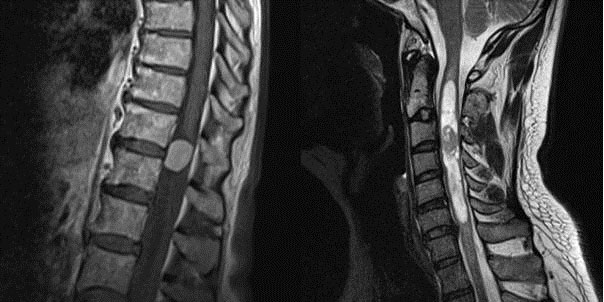
Spinal tumors are abnormal tissue growths within or surrounding the spine. Some spinal tumors can be cancerous (malignant), while others are non-cancerous (benign) and usually alter your spine’s structure and function. Jeff Pan, MD, performs neurosurgery in Edison, NJ. He uses advanced medical technology and techniques to diagnose and treat spinal tumors.
Understanding Spinal Tumors
When cells in the spine grow and multiply uncontrollably, they lead to abnormal tissue growths within or around your spinal column or canal. Spinal tumors are mostly genetically inherited. Therefore, you are vulnerable to developing spinal tumors if it runs in your family. Other genetic conditions, such as neurofibromatosis, also make you susceptible to developing spinal tumors.
Types of Spinal Tumors
The types of spinal tumors can be grouped according to their origin:
Primary tumors
Primary spinal tumors are those that originate directly from the spine.
Metastatic tumors
Metastatic spinal tumors are those that originate from other parts of the body and spread to the spine.
Spinal tumors can further be categorized based on their formation. They include:
Extradural or epidural tumors
Extradural spinal tumors form in your spinal column and mostly affect your vertebrae.
Intradural tumors
Intradural spinal tumors form in the membrane that surrounds your spinal cord and may or may not affect your spinal cord.
Intramedullary tumors
Intramedullary spinal tumors form and affect your spinal cord.
Symptoms of Spinal Tumors
The symptoms of spinal tumors vary depending on type and location. However, common symptoms include:
- Neck or back pain that is not attributed to injury, stress, or physical activity
- Decreased sensitivity to pain and temperature
- Spinal radiculopathy
- Muscle weakness or loss of sensation in the legs, arms, or chest
- Leg pain
- Clumsiness and falls due to difficulty walking
- Increase in neurologic symptoms such as numbness, tingling, or burning sensation
- Bladder and bowel problems
- Paralysis depending on the nerves that are compressed
As the tumor grows, it may alter the spinal alignment, leading to spinal deformities.
Diagnosis of Spinal Tumors
During your first consultation, Dr. Pan will start by conducting a thorough physical examination. He will also review your symptoms, medical and family history to determine the root cause of your pain.
Spinal tumors diagnostic test include;
- Acid Phosphatase
- X-rays, MRIs, or CT scan
- Serum Protein Electrophoresis (SPE)
- Erythrocyte sedimentation rate (SED rate)
- Myelography
- Complete blood count (CBC)
- Urinalysis
- Comprehensive metabolic panel
Treatment of Spinal Tumors
Treatment aims to reduce your pain while preserving your neurological structure and function and maintaining stability in your spine.
Dr. Pan usually develops a treatment plan for spinal tumors, depending on their location and type. Non-cancerous tumors only require monitoring and are treated when they increase in size or alter spinal function. For cancerous tumors, treatment may include surgery, radiation therapy, chemotherapy, and Bracing. Radiation and chemotherapy are performed in conjunction with surgery to provide optimal recovery.
It is essential to visit the doctor as soon as you detect spinal tumor symptoms so that treatment can start early.
To learn more about spinal tumors, schedule an appointment online or call the office of Jeff Pan, MD, today.

